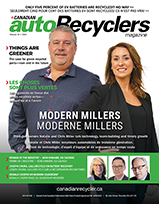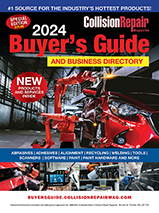By Jeff Sanford
Moncton, New Brunswick — November 22, 2017 — The New Brunswick government recently granted permission to the largest auto insurer in the province to raise rates by the largest margin in a decade.
The increases come as insurance companies struggle to maintain financial solvency in an era of ultra-low interest rates and rising repair costs. In the case of New Brunswick, the province’s insurance board has allowed Wawanesa to increase its rates by almost seven percent.
Insurance companies hoping to raise rates in the province need to apply to the New Brunswick Insurance Board (NBIB), which analyzes applications from insurers to ensure that proposed rate changes are “just and reasonable.”
The province’s Insurance Act requires auto insurers to file proposed rate changes once every twelve months. If the proposed rate increase is greater than three percent the insurer is required to appear before the board.
In the 2017 Wawanesa filing the company suggested that it would have to raise rates by a remarkable 31.7 percent to achieve profitability. According to a NBIB filing the increases included a rise of more than 15 percent in both bodily injury costs and accident benefits, as well as a five percent increase in collision costs. But the decision handed down by the NBIB notes that Wawanesa has only requested an increase just under seven percent so as not to “shock” policy holders.
According to the text of the NBIB decision: “Wawanesa suggests that this indicates that its rates are inadequate, but wishes to avoid rate shock for policyholders. For these and other reasons, Wawanesa selects the proposed rate increase of 6.96 percent (after capping).”
According to the filing, Wawanesa was previously forced by another provincial board to reduce its “premium-to-surplus” ratio from 3.25 to 2, which impacted profitability. NBIB said: “Little explanation is given for this change, except that a different panel of this board has previously required an insurer to adopt this ratio.” Recent changes to the HST in the province in mid-2016 also affected profitability at the company.
In its decision the NBIB did quibble with some of the numbers in the application. Though the disagreements were marginal at most. “The Panel does not make any decision with respect to the reasonableness of the applicant’s indicated rate of 31.7 percent. However, the panel notes that, even if adjusted to comply with the panel’s findings regarding HST and loss development factors, the revised indicated rate would be 30 percent, far exceeding the selected rate of 6.96 percent after capping,” according to the NBIB filing. As a result: “The Applicant justifies its selection of 6.96 percent in the face of the much higher indicated rate… despite an implied [return on equity] that is negative.”
All in, the NBIC found the rate increase to be “…just and reasonable.” The ruling will be felt among drivers in the province.
Wawanesa has been the largest auto insurer in the province for a decade. It is said to insure more than 90,000 cars in the province. Those drivers will now brace new rates that come into effect January 1, 2018. According to the filing, Wawanesa policy holders will see rates rise to approximately $680.70 from the current average of approximately $620.26. These rates are still below the average premium in New Brunswick for auto insurance, which is approximately $782, but they are thought to be the largest in a decade.
That Wawanesa would be applying for such a large increase now is no surprise. By providing a lower-than-average rate in the province the company managed to pull in the most business over the last decade in the auto sector. But that strategy has left the company in a tight spot as insurers deal with a flurry of issues that have combined to push up costs.
Those within the collision repair space know that the cost of repairing today’s more technically complex, sensor-laden cars is increasing significantly. The most recent industry trend report from collision industry data-provider Mitchell found that the average value of an initial appraisal of a car brought into a collision repair shop rose to $3,910 in the first quarter of 2017. This is a $139 increase from the first quarter of 2016. These stats are calculated by combining data from repairable vehicle appraisals uploaded through Mitchell Canadian systems, and so can be considered as accurate and up-to-date as is possible to find.
At the same time insurance companies are dealing with market returns on investment portfolios that are lower than ever.
Insurance companies help cover costs through returns on massive stock and bond portfolios. But with interest rates at historically low levels those big bond portfolios are returning less cash than ever. In the late 1990s when stock markets were returning more than 20 percent annually in some years, insurance companies could pay more in claims than they took in. At that time insurance companies were utilizing a 105-percent underwriting ratio. That is, for every dollar taken in through fees on policies the companies spent a $1.05 in claims, with the rest being covered by hot investment returns. This is no longer the case today, of course.
Now investment professionals advise those relying on market returns to expect stocks to produce four to eight percent returns over the medium term, while bonds pay less than two percent. All in, it’s tough to be in the insurance industry these days.
This past spring the Conference Board of Canada released a major report on the insurance industry that found that, “…slower consumer spending on big-ticket insurable items, as well as an aging population, will weigh on the outlook for Canadian insurance firms.” Michael Burt, director of industrial trends at The Conference Board, was quoted as saying: “Canadian insurance providers are facing a number of headwinds. Discretionary spending on items that require insurance, such as recreational vehicles and vacation properties, is expected to slow amid rising household debt, and weak employment and wage increases… Growth in Canada’s insurance industry will be limited by weaker consumer spending and an aging population… Low interest rates will continue to limit the return on investment for insurers, resulting in margins hovering just under 10 percent after the recovery.”
The decision in the Wawanesa case can be found on NBIB’S website here. Collision Repair magazine reached out to Wawanesa, but a spokesperson was not available at the time of publication.





























































